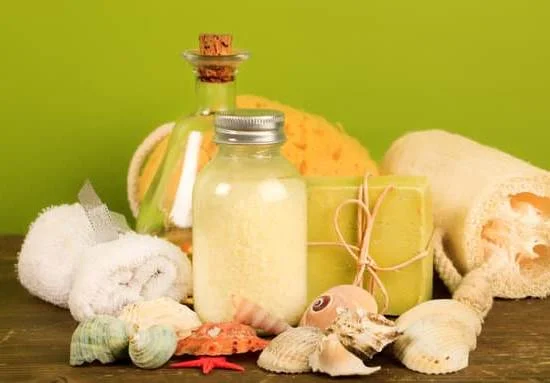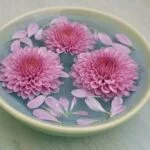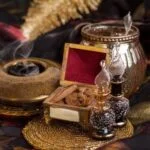Swedish aromatherapy massage is a popular type of massage therapy that combines the techniques of Swedish massage with the use of essential oils. It provides not only physical relaxation and relief from muscle tension but also a holistic experience for mind and body. With its roots in traditional Swedish massage, this form of therapy has evolved to incorporate the healing benefits of aromatic plant extracts.
Dating back to 19th-century Sweden, Swedish massage techniques were developed by Per Henrik Ling and heavily influenced by Dutch practitioner Johann Georg Mezger. These techniques involve manipulating the soft tissues of the body, such as muscles and ligaments, to relieve tension and promote both short-term and long-term relaxation. In recent years, aromatherapy has been integrated into Swedish massage sessions, enhancing their effectiveness and providing additional therapeutic advantages.
Aromatherapy in Swedish massage involves the use of essential oils derived from plants to enhance the overall experience. Essential oils are concentrated extracts obtained through various methods such as steam distillation or cold pressing.
These oils possess unique scents and therapeutic properties that can positively affect mood, emotions, and physical well-being when applied topically or inhaled during a massage session. By combining the benefits of touch therapy with the healing properties of essential oils, Swedish aromatherapy massage offers a multifaceted approach to relaxation, rejuvenation, and improved overall health.
Benefits of Swedish Aromatherapy Massage
Swedish aromatherapy massage offers a multitude of benefits for both the body and mind. This holistic approach to massage combines the techniques of Swedish massage with the aromatic properties of essential oils. Here are some of the key benefits that can be experienced through this unique combination:
- Relaxation and stress relief: One of the primary benefits of Swedish aromatherapy massage is relaxation and stress relief. The gentle, flowing strokes of Swedish massage combined with the calming scents of essential oils create a serene and tranquil environment, helping individuals unwind and let go of tension.
- Improved blood circulation and lymphatic drainage: Another advantage of Swedish aromatherapy massage is its ability to enhance blood circulation and lymphatic drainage. The long, gliding strokes used in Swedish massage assist in promoting healthy blood flow, while the application of essential oils aids in stimulating lymphatic system activity, reducing fluid retention, and detoxifying the body.
- Pain and muscle tension relief: Individuals suffering from muscle soreness or tension can find relief through Swedish aromatherapy massage. The kneading and rolling motions used in petrissage techniques help alleviate muscle knots and tightness, while the anti-inflammatory properties of certain essential oils further contribute to pain reduction.
- Enhanced mood and mental well-being: The scents emitted by essential oils during a Swedish aromatherapy massage have profound effects on our emotions and mental state. Certain oils like lavender or chamomile are known for their calming properties, while citrus-based oils can invigorate and uplift moods. This combination helps promote a sense of overall well-being and relaxation.
Aromatherapy in Swedish Massage
Aromatherapy is an integral part of Swedish massage, enhancing the overall experience and therapeutic benefits. In aromatherapy, essential oils derived from plants are used to promote relaxation, alleviate physical discomfort, and uplift the mood. These oils are highly concentrated and possess aromatic compounds that interact with the body and mind during the massage.
Essential oils play a vital role in Swedish aromatherapy massage by complementing the techniques used and maximizing their effects. They are commonly added to carrier oils, such as jojoba or almond oil, before being applied to the skin. The oils can also be diffused into the air or inhaled directly for inhalation therapy.
There is a wide variety of essential oils used in Swedish aromatherapy massage, each with its unique scent and therapeutic properties. Some popular essential oils include lavender, peppermint, eucalyptus, chamomile, and citrus oils like lemon or sweet orange. Lavender oil is known for its relaxation properties, while peppermint oil provides a cooling sensation and helps relieve muscle tension.
Eucalyptus oil has analgesic properties that can help with pain relief, while chamomile oil promotes a calm state of mind. Citrus oils are uplifting and refreshing.
During a Swedish aromatherapy massage session, specific essential oils may be selected based on individual needs and preferences. The scents of these oils stimulate the olfactory system in our brain, activating emotional responses and triggering relaxation or invigoration depending on the desired outcome. Additionally, certain essential oil properties have physiological effects when absorbed through the skin, such as increased blood circulation or reduced inflammation.
Techniques Used in Swedish Aromatherapy Massage
Swedish aromatherapy massage incorporates a variety of techniques to provide a therapeutic and relaxing experience. These techniques are specifically designed to target different areas of the body and promote overall well-being. Understanding the various techniques used in Swedish aromatherapy massage can help individuals choose the type of massage that best suits their needs.
- Effleurage: This technique involves long, gliding strokes using the hands or forearms. It is typically performed at the beginning and end of a massage session to warm up and cool down the muscles. Effleurage helps relax the muscles and improve circulation, making it an essential part of Swedish aromatherapy massage.
- Petrissage: This technique involves kneading, rolling, or squeezing motions using the hands, thumbs, or fingertips. Petrissage is effective in relieving muscle tension, reducing stiffness, and improving muscle flexibility. It targets deeper layers of muscle tissue and promotes relaxation.
- Friction: Friction involves applying pressure with fingertips or palms in circular or transverse movements. This technique is useful for releasing knots and adhesions in muscles, which can cause pain and restrict movement. It helps improve blood flow to specific areas, promoting healing and easing muscle tension.
- Tapotement: Tapotement consists of rhythmic tapping or percussive movements on the body using cupped hands, fists, or fingertips. This technique stimulates nerve endings, invigorates the muscles, and energizes the body. Tapotement can also improve lymphatic drainage and enhance circulation.
| Technique | Description |
|---|---|
| Effleurage | Long, gliding strokes to relax muscles and improve circulation |
| Petrissage | Kneading and rolling motions to relieve tension and improve muscle flexibility |
| Friction | Applying pressure with fingertips or palms to release knots and adhesions |
| Tapotement | Rhythmic tapping or percussive movements to invigorate and energize |
These techniques are often combined throughout a Swedish aromatherapy massage session, providing a holistic approach to relaxation and wellness. The therapist may adjust the intensity of each technique based on the client’s preferences and needs. It is important for individuals receiving a Swedish aromatherapy massage to communicate any discomfort or pain during the session so that the therapist can modify their techniques accordingly.
Procedure of a Swedish Aromatherapy Massage Session
During a Swedish aromatherapy massage session, clients can expect a soothing and rejuvenating experience that combines the benefits of traditional Swedish massage techniques with the added therapeutic properties of essential oils. Here is a step-by-step guide on what to expect during a typical session:
- Pre-massage consultation: Before the massage begins, the therapist will consult with the client to discuss any specific concerns or goals they may have. This allows the therapist to customize the massage based on the individual’s needs, whether it be relaxation, pain relief, or stress reduction.
- Application of essential oils: After the initial consultation, the therapist will choose specific essential oils based on their therapeutic qualities and the client’s preferences. Essential oils are highly concentrated plant extracts that are known for their aromatic and medicinal properties. They are diluted with carrier oils before being applied to the skin during massage.
- Placement of essential oils: The therapist will strategically place drops of diluted essential oils on various points of the client’s body. These points may include areas such as the wrists, temples, or behind the ears. The choice of placement depends on the desired effects of each essential oil and its interaction with different parts of the body.
- Massage techniques: Once the essential oils have been applied, the therapist will begin using a combination of Swedish massage techniques to deliver a relaxing and therapeutic experience. These techniques may include effleurage (gliding strokes), petrissage (kneading motions), friction (pressure applied with fingertips or palms), and tapotement (rhythmic tapping or percussive movements).
Each technique is designed to target specific areas and provide different benefits such as muscle relaxation, increased blood circulation, and tension relief.
Throughout the session, clients may experience deep relaxation, improved mood, and enhanced mental well-being due to both the physical touch and inhalation of aromatic scents from essential oils. The therapist may also adjust the pressure and technique based on the client’s feedback to ensure maximum comfort and effectiveness.
| Procedure of a Swedish Aromatherapy Massage Session |
|---|
| The therapist consults with the client to discuss their concerns and customize the massage. |
| The therapist applies diluted essential oils to specific points on the client’s body. |
| The therapist uses a combination of Swedish massage techniques during the session. |
Safety Precautions and Contraindications
While Swedish aromatherapy massage can offer numerous benefits, it is important to be aware of certain safety precautions and contraindications. This ensures that individuals receive a safe and effective massage experience. It is always recommended to consult with a healthcare professional before receiving a massage, especially if you have any underlying health conditions or are taking medications.
Individuals who should avoid Swedish aromatherapy massage due to certain conditions or medications
Certain individuals should exercise caution or avoid Swedish aromatherapy massages altogether. These include:
- Pregnant women: Although generally considered safe during pregnancy, it is crucial to inform your massage therapist about your condition. Depending on the stage of pregnancy, certain techniques and essential oils may need to be avoided.
- People with skin sensitivities: If you have sensitive skin or are prone to allergies, it’s essential to inform your massage therapist beforehand. They can suggest appropriate essential oils and perform a patch test on a small area of skin to check for any adverse reactions.
- Individuals with open wounds or injuries: If you have any open wounds, cuts, bruises, or injuries in the area being massaged, it’s important to inform your therapist. In such cases, they may modify techniques or avoid applying pressure directly on the affected areas.
- Those with specific medical conditions: Individuals with conditions such as deep vein thrombosis (DVT), varicose veins, fractures, acute inflammation, burns, infectious skin diseases, or recent surgeries should not undergo Swedish aromatherapy massages without consulting their healthcare provider first.
Possible allergic reactions to essential oils and how to perform a patch test before the massage
Essential oils are integral to aromatherapy in Swedish massage; however, some people may have allergies or sensitivities towards certain oils. To avoid potential allergic reactions during the massage session:
- Inform your massage therapist about any known allergies or sensitivities you have.
- Prior to the massage, the therapist may perform a patch test by applying a diluted form of the essential oil on a small area of skin, typically on the forearm.
- The therapist will then wait for at least 24 hours to observe any adverse reactions, such as redness, itching, or inflammation.
- If there are no reactions after this period, it is generally safe to proceed with the massage session.
Recommendations for consulting with a healthcare professional before receiving a massage
It is advisable to consult with a healthcare professional before scheduling a Swedish aromatherapy massage if:
- You have any underlying health conditions or medical concerns.
- You are taking medications that may interact with essential oils or certain massage techniques.
- You have recently undergone surgery or have any other acute injuries.
- You are unsure whether you would be suitable for this type of massage due to any other reason.
By prioritizing safety and seeking guidance from professionals when needed, individuals can ensure a positive and beneficial Swedish aromatherapy massage experience tailored specifically to their needs.
DIY Swedish Aromatherapy Massage at Home
Many individuals enjoy the benefits of Swedish aromatherapy massage but may not have the time or resources to regularly visit a professional massage therapist. Fortunately, it is possible to perform a DIY Swedish aromatherapy massage at home. By following a few tips and guidelines, you can create a relaxing and rejuvenating experience for yourself.
Tips and Guidelines for Performing a Self-Massage with Essential Oils
Before beginning your self-massage, it is essential to select the right essential oils for your needs. Different oils have varying properties and scents that can evoke different effects on the body and mind. For relaxation, lavender or chamomile essential oils are commonly used. To invigorate and uplift your mood, citrus oils such as lemon or sweet orange may be preferred. Take the time to research and experiment with different blends until you find what works best for you.
Instructions on Proper Techniques for Self-Massage
When performing a self-massage, it is important to create an environment that promotes relaxation and sets the mood. Find a quiet space where you can comfortably lie down or sit, preferably in a warm room with soft lighting or candles. Begin by applying a small amount of diluted essential oil to your hands and rub them together to warm up the oil.
Start with gentle strokes using both hands on each side of your spine, moving from the neck down towards the lower back. Gradually increase pressure using long gliding strokes known as effleurage. As you continue, incorporate techniques like kneading and rolling motions (petrissage) on larger muscle groups such as the shoulders, thighs, and calves.
If you have any areas of tension or soreness, use your fingertips or palm to apply pressure in circular motions (friction) over those areas until relief is felt. Finish off by tapping or gently slapping (tapotement) various parts of your body to stimulate and energize. Remember to always listen to your body and adjust the pressure accordingly.
Avoiding Common Mistakes
While performing a DIY Swedish aromatherapy massage at home can be a wonderful experience, there are some common mistakes to avoid. First, it is important not to use too much essential oil as this can overwhelm the senses and potentially cause skin irritation. Always dilute the essential oils properly with a carrier oil before applying them to your skin.
Additionally, do not rush through the massage. Take your time with each stroke and focus on connecting with your body and breath. Finally, be mindful of any existing medical conditions or injuries that may require special attention or avoidance of certain areas.
Performing a DIY Swedish aromatherapy massage at home can provide numerous benefits for both physical and mental well-being. However, it is crucial to consult with a healthcare professional if you have any concerns or if you are unsure whether self-massage is safe for your individual situation. With proper precautions and guidance, you can create a relaxing and therapeutic experience in the comfort of your own home.
Frequently Asked Questions about Swedish Aromatherapy Massage
The popularity of Swedish aromatherapy massage has led to many questions from those interested in trying this therapeutic technique. In this section, we will address some frequently asked questions to provide a better understanding of its potential benefits and considerations.
One common query is whether Swedish aromatherapy massage can help with specific health conditions. While it is known to promote relaxation, improve circulation, and relieve muscle tension, the effects may vary depending on individual circumstances. It is always recommended to consult with a qualified massage therapist or healthcare professional who can evaluate your specific needs and determine if Swedish aromatherapy massage is appropriate for you.
Another important question is how long the effects of Swedish aromatherapy massage last. In general, the immediate effects of relaxation and reduced muscle tension can be felt during and after the session. However, long-term benefits such as improved mood and mental well-being may require regular sessions over time. The duration of these effects also varies among individuals and depends on factors such as lifestyle, overall health, and stress levels.
In terms of side effects, Swedish aromatherapy massage is generally considered safe. However, it’s important to be aware that some individuals may have allergic reactions to certain essential oils used during the massage.
To minimize the risk, it is advisable to perform a patch test before the session or inform your therapist about any known allergies or sensitivities. Additionally, if you have any underlying health conditions or are taking medications that could potentially interfere with the massage, it’s best to consult with your healthcare provider beforehand.
Lastly, one question often asked is what to wear during a Swedish aromatherapy massage session. To ensure maximum comfort and proper access for effective treatment, most people undress partially or completely according to their personal preference. Therapists are trained professionals who prioritize client modesty and employ draping techniques to ensure privacy at all times during the session.
Overall, Swedish aromatherapy massage offers numerous potential benefits for both physical and mental well-being. However, it’s essential to approach this modality with proper knowledge, considerations, and professional guidance to ensure a safe and effective experience. By addressing these frequently asked questions, we hope to assist individuals in making informed decisions about incorporating Swedish aromatherapy massage into their wellness routine.
Frequently Asked Questions
What can I expect from an aromatherapy massage?
An aromatherapy massage combines the therapeutic benefits of massage with the use of essential oils derived from plants. During an aromatherapy massage, you can expect to have your body relaxed and gently massaged by a trained therapist, who will incorporate the use of specific essential oils based on your needs and preferences.
The essential oils are selected for their various properties, such as calming or invigorating effects, and are often blended to create a personalized experience. The scents of the essential oils can help promote relaxation, relieve stress, improve mood, and enhance overall well-being.
What is the difference between a normal massage and an aromatherapy massage?
The main difference between a normal massage and an aromatherapy massage lies in the inclusion of essential oils in the latter. While both types of massages aim to relax muscles and promote general well-being, an aromatherapy massage specifically uses aromatic plant oils to enhance the therapeutic benefits.
The scent of the essential oils not only contributes to relaxation but can also have additional effects on the body and mind through inhalation or absorption into the skin during the massage. This combination provides a more holistic approach to relaxation and wellness.
What is the difference between Swedish aroma and deep tissue massage?
Swedish aroma massage and deep tissue massage are both types of massages designed to alleviate tension in muscles and promote relaxation; however, they differ in their techniques and intended outcomes. A Swedish aroma massage primarily focuses on long, flowing strokes that aim to provide relaxation by eliminating muscle tension and improving circulation throughout the body.
It typically utilizes lighter pressure with rhythmic movements using palms and fingertips.

Are you looking for a natural way to improve your health and wellbeing?
If so, aromatherapy may be the answer for you.





